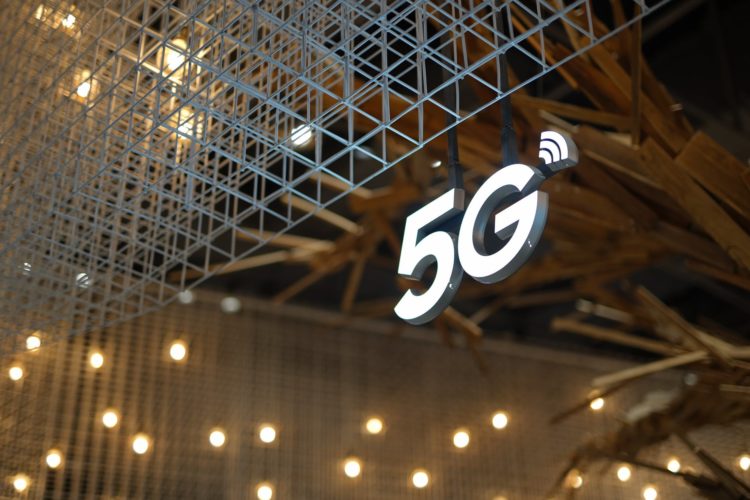The EY Reimagining Industry Futures Study reveals that enterprises are looking to 5G to help alleviate immediate business pressures brought by the COVID-19 pandemic and related global events. Forty-nine per cent of respondents are prioritising process optimisation as a key application, compared with 28% who favour advanced 5G use cases featuring virtual or augmented reality. The findings indicate enterprises are now focused on bolstering business resilience, meeting corporate priorities and responding to stakeholder demands.
A range of external factors underpins this trend. Eighty-five per cent of respondents say the impact of the global health crisis is driving their interest in 5G, up from 52% in last year’s study. Eighty per cent say supply chain disruption has galvanized their 5G pursuit, while 71% cite the focus on environmental, social and governance (ESG) issues.

However, there is some way to go in realising these ambitions: 37% are concerned that 5G and internet of things (IoT) vendors’ current use cases do not meet their business resilience and continuity needs, and 47% do not think their sustainability goals are met by today’s use cases.
Tom Loozen, EY global telecommunications leader, says that while the hype around how 5G low latency could power the metaverse or commercialize augmented reality continues to intensify, this study indicates that the technology has moved out of its infancy and is now actively being applied to drive real-world benefits.
He stressed the need for 5G providers to tune their solutions to the practical demands of industry leaders today.

In Southeast Asia, 5G adoption has also met with roadblocks. Joongshik Wang, EY ASEAN technology, media & entertainment and telecommunications (TMT) Leader, noted that use cases for 5G in the private sector will need to be more clearly defined before technology operators are confident enough to take 5G applications to market.
He acknowledged that governments are the main drivers of investments in 5G infrastructure public sector projects – for now.
The appeal of private networks
The study further finds that enterprises are becoming increasingly receptive to 5G solutions delivered through disruptive business models. Seventy-seven per cent of enterprise respondents are interested in using private networks to support the implementation of 5G and IoT use cases, and 71% are interested in buying 5G through an intermediary rather than directly from a telco.
According to Joongshik private networks are of high quality, secure and seamless. However, private network operators will need to provide a strong cost-benefit case to justify the high investment costs.
“The commercialization of 5G private networks will also require governments to play an active role in outlining the key considerations and providing a clear regulatory framework on licensing for private networks,” he continued.
Telcos battle credibility gap
Telcos face a significant credibility gap with regards to their perception as digital transformation experts, with only 19% of enterprises considering them as such (unchanged from last year’s study findings). Conversely, 30% trust network equipment vendors as favoured digital transformation experts – up from 19% last year.
“Disruptive customer signals suggest that telcos’ traditional relationships with enterprise customers are under pressure and more agile go-to-market strategies are essential in a 5G-IoT world. Telcos should take steps now to help ensure that they can meet enterprise demand for private network deployments,” Loozen opined.
Enterprise growth agenda
Sixty-nine per cent of respondents stated that they already collaborate with other organisations as part of a business ecosystem – unchanged from last year’s study.
However, the findings indicate that businesses are being bolder in their approach to partnerships, with 36% seeking vertical partnerships with companies in other sectors (up from 24% last year), and 73% are prioritising suppliers that can offer ecosystem relationships as part of their 5G capabilities.
5G leads all other emerging technologies tracked in the study in terms of future spending intentions, with 56% of enterprise respondents planning to invest within three years.
Current and future spending intentions for 5G over this period are highest in Europe (up 5% to 76%), in contrast to last year when Europe lagged other regions. However, the findings caution that investment should not be taken for granted, with intentions falling by 8% year-on-year to 70% in Asia-Pacific and the Middle East.
This caution is indicative not only of a more defensive approach toward 5G but of stalling confidence generally, with only 24% of enterprise respondents stating that they are very confident they can successfully implement 5G (down by 1% year-on-year).
This is compounded by enterprises’ poor understanding of 5G’s relationship to other emerging technologies, now cited as the biggest internal challenge to 5G perception – up from fifth position in last year’s ranking.

Adrian Baschnonga, EY global telecommunications lead analyst, believes there are still fundamental anxieties around how 5G works alongside other emerging technologies.
“5G providers should take this on board and adapt their customer discussions accordingly. By educating enterprises on how 5G can be harnessed by other emerging technologies, service providers can boost enterprise confidence in their 5G deployments,” he concluded.





